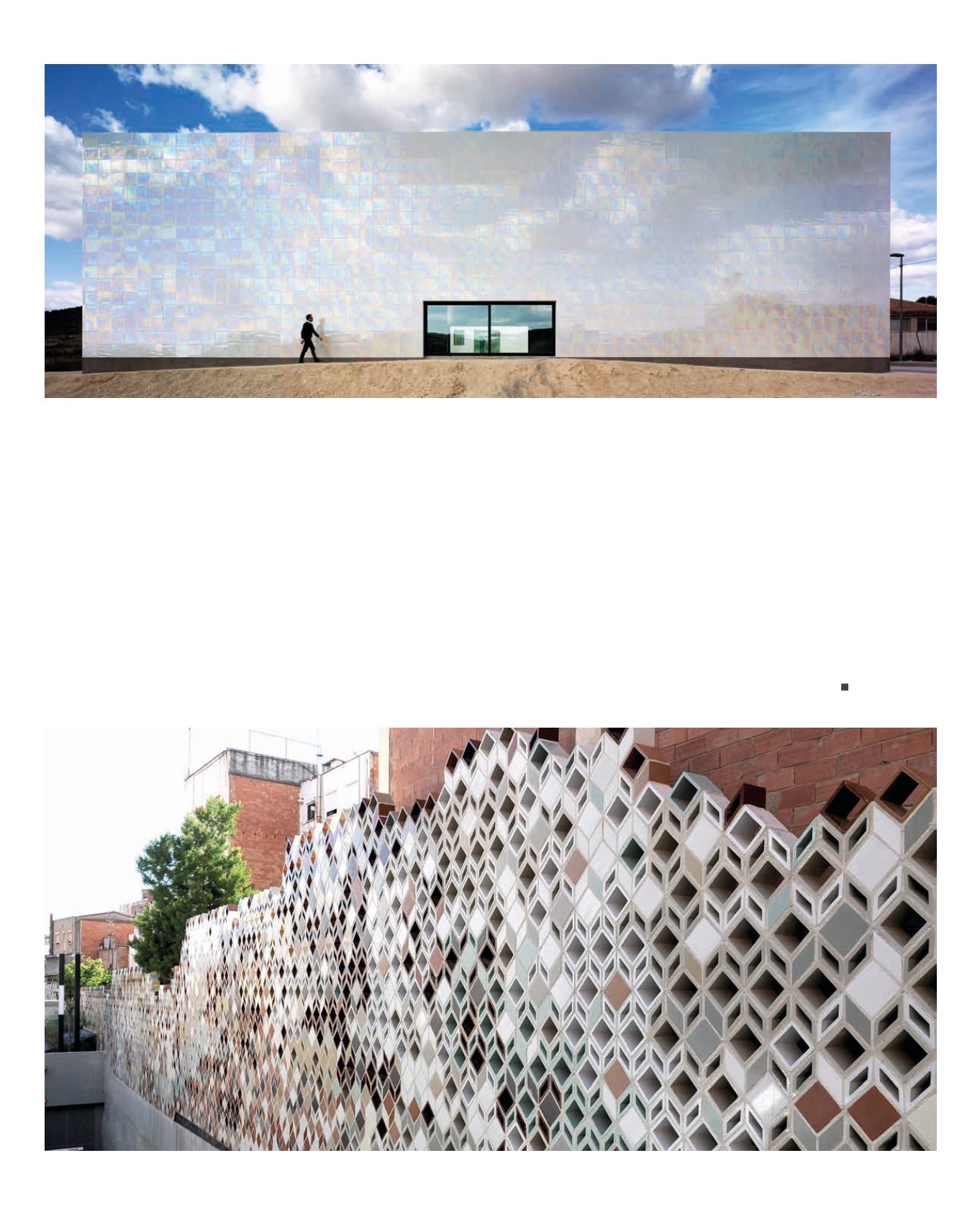
pavilion at the Aichi Expo (Japan) and the
award-winning Riera de la Salut promena-
de respectively. The latter project filled the
neighborhood with vitality, energy and, most
of all, lots of ceramic.
There are innumerable spaces that, even if
they are conventional or even trivial are able
to convey something unique to those who in-
habit them: vertical seas, warmth amid pristine
cleanliness, altered nature or tradition in the
midst of the cutting edge. Ceramic can crea-
te all of this when it has been used in a way
that is well thought-out and appropriate, in a
16
become an identifying feature, a mark of hope
and color in a space, a place that is struggling
to define itself.
While we have focused thus far on interiors
and content, there are also some very well-
known projects where the architects have
played with tones and textures on outdoor
‘canvases’. The famous esplanade in Beni-
dorm by Carlos Ferrater is a clear example of
this testament to expression, with the cera-
mic tiles flooding the walkway with color. Ar-
chitectural practices FAO and Pol Femenias
did much the same thing with the Spanish
kind of game that the most brilliant minds can
play. Transposing the well-known saying “you
either win or you lose” to this game of tones,
there can be no doubt at all that ceramic is the
Queen Khalesi of architecture
In the game of tones, you
either win or lose and
ceramic is, most definitely,
the monarch of the realm
of materials.
Pearlized ceramic facade. MUCA Building, by COR Arquitectura.
Riera de la Salut promenade, by Pol Femenias. Winner of the architecture category of the Tile of Spain Awards 2013. Photo: OMStudi.


